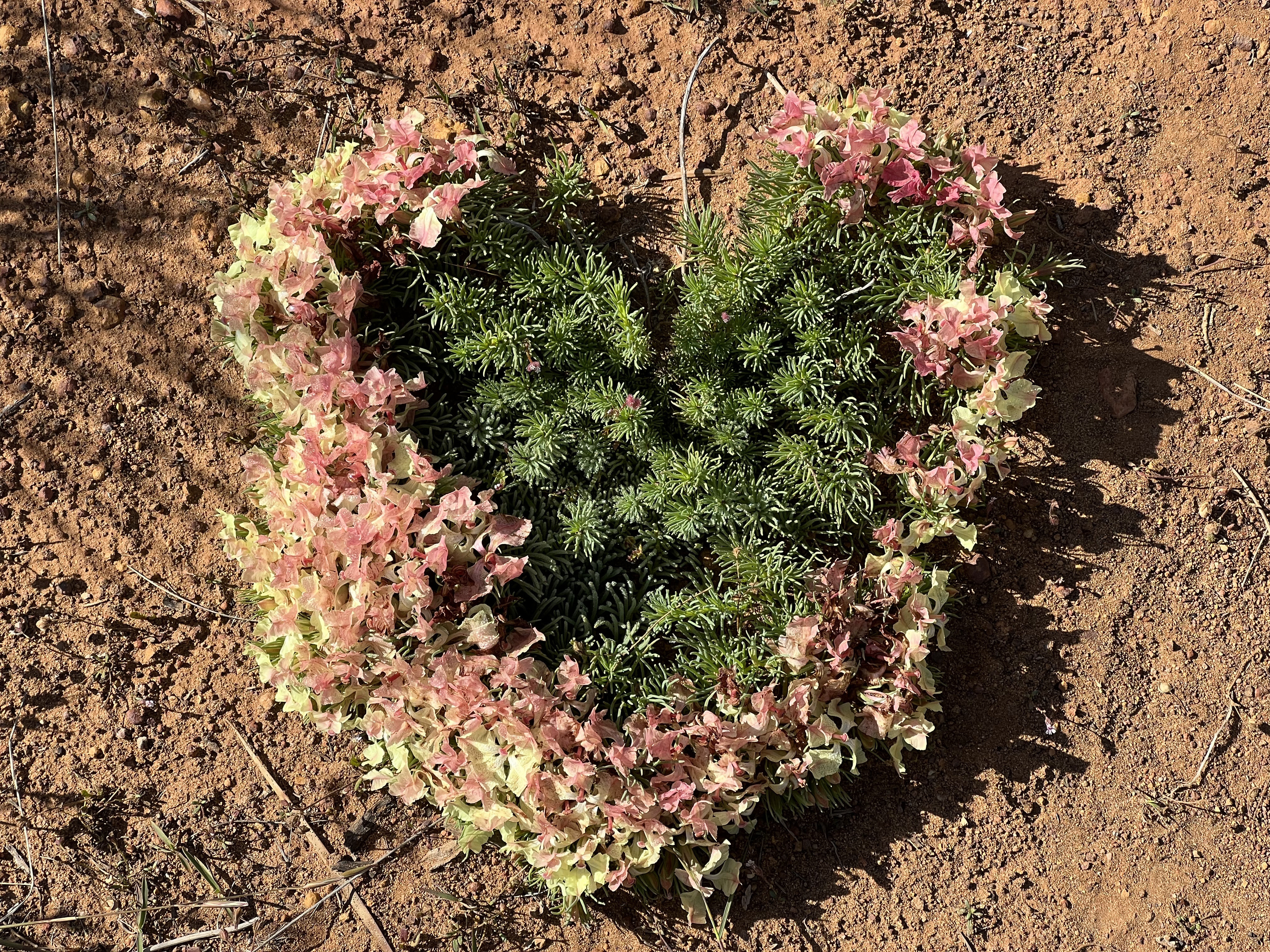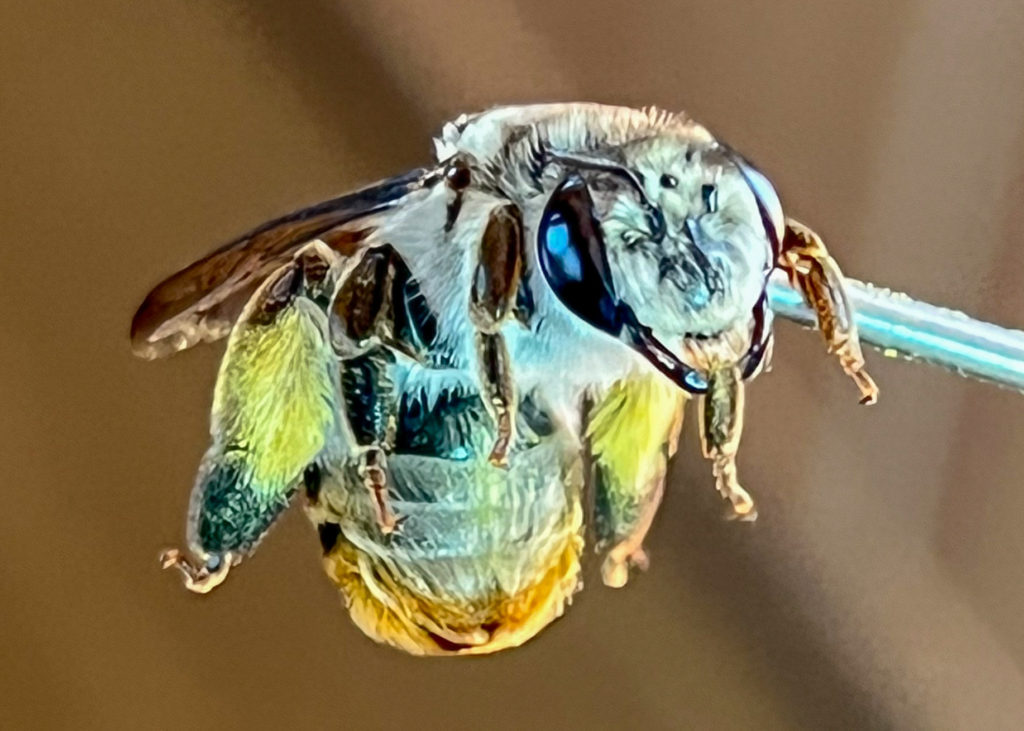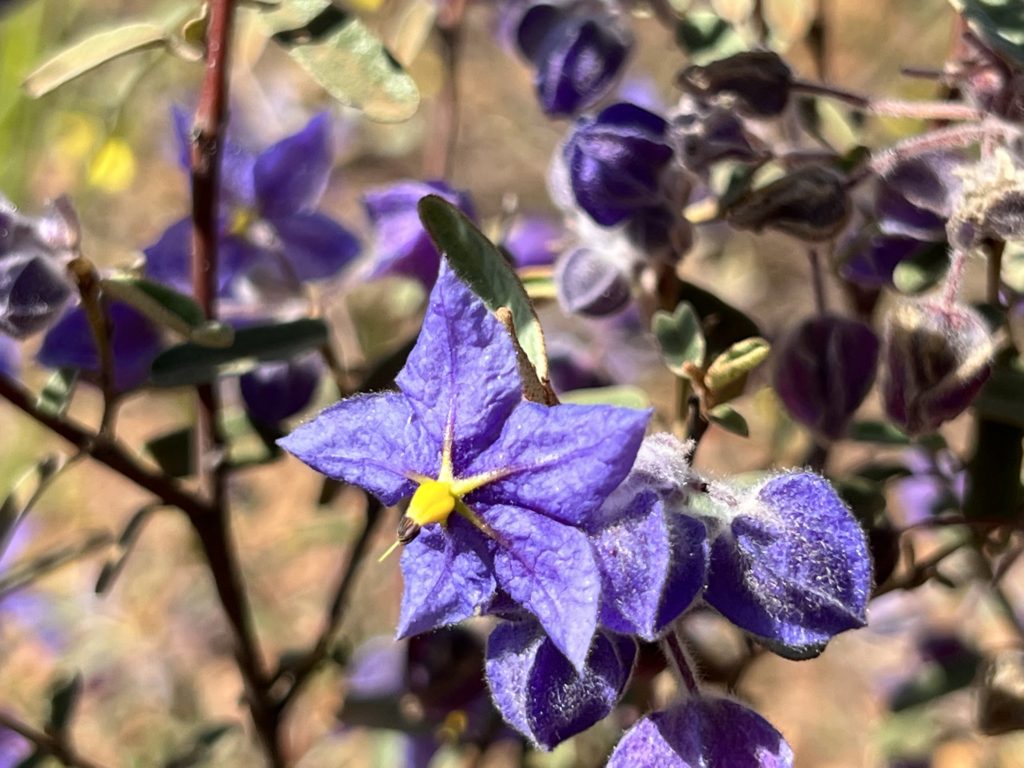18 September. We get a reliable tip off that the amazing ref flowers are nearby. We pick up camp and hit the road, until we see the old wind turbine of an abandoned water pump. On the side of the road, we spot the strange and beautiful wreath flowers (Lechenaultia macrantha). This unusual plant forma a low mat that produces a ring of flowers at its edge. But the botanical highlight is hidden in plain sight just besides the reeflowers. A small bush ripe with hundreds of purple flower buds lines the edge of the road a few meters from where we are. this interesting plant slowly opens its buds as the morning warms up and reveals another buzz pollinated wonder! the flowers of Seringia (Malvaceae), mimic Solanum flowers with its bright yellow stamen cone at the centre (more on the amazing morphology of Seringia later). The resemblance seems to work well, and we soon find plenty of bees visiting this plant.

Nearby, a pink Maleleuca is a magnet of small and large bees, and here we find an astounding Australian bee. The full ID will need to wait for the experts, but it appears that we have found Ctenocolletes aff. rufescens in the unusual family Stenotritidae. If confirmed, this is one of the most exciting findings of the trip so far. The family Stenotitridae is the smallest of all bee families, with about 21 species restricted to Australia, mostly in the west (Danforth et al. 2019. The Solitary Bees). A mysterious bee group sister to the most abundant bee family in Australia (Colletidae). I cannot wait to see the evaluation of the taxonomic experts, and start analysing the buzzes of this fantastic bee group!
Superficially similar to my favourite Australian bee, the blue banded bee, this gorgeous Ctenocolletes rufescens cannot restist the nectar and pollen of the Maleleuca brush flower. We manage to collect an measure this and other bees of all different kinds and sizes. Today has also been an excllent day for data colection. we spend the day here and later begin travelling north to our next destination.

As we approach some low hills, David spots on the road a Western blue-tongue lizard. We stop to take a photo, and the monster warns us off from getting close by rapidly sticking out its blue tongue. we leave it looking grumpy on the side of the road.
As the day wears off, we decide to call in Geralton for the evening. After a few days on the road it will be nice to have hot shower and resupply on water and food.
